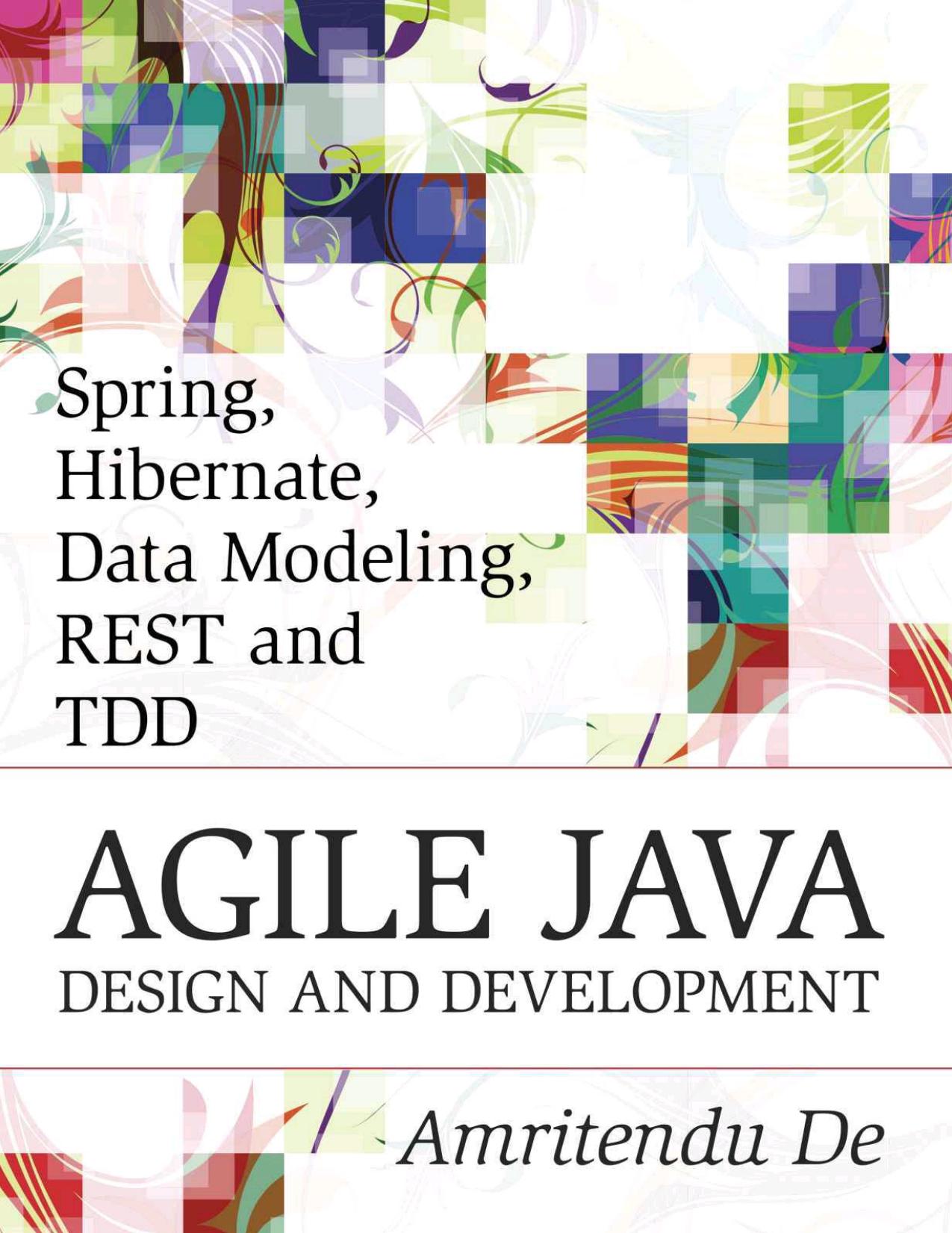Spring, Hibernate, Data Modeling, REST and TDD:Agile Java Design and Development by Amritendu De

Author:Amritendu De [De, Amritendu]
Language: eng
Format: epub, pdf
Published: 2015-01-10T22:00:00+00:00
var username = $(“#userSelectBox”).find(‘option:selected’).text();
var groupname = $(“#groupSelectBox”).find(‘option:selected’).text();
if(null != userid && “” != userid && null!= groupid && “” != groupid) {
var formData={“userDto”:{“id”:userid},”groupDto”:{“id”:groupid}};
$.ajax({
url : “/Spring-OODD/manytomanyunidirectional/usergroup/mock/isPresent”,
type: “POST”,
data : JSON.stringify(formData),
beforeSend: function(xhr) {
xhr.setRequestHeader(“Accept”, “application/json”);
xhr.setRequestHeader(“Content-Type”, “application/json”);
},
success: function(data, textStatus, jqXHR)
{
if(!data) {
createUserGroup(userid, groupid, username, groupname);
} else {
alert(“User already assigned to this group”);
}
},
error: function (jqXHR, textStatus, errorThrown)
{
alert(“Error Status Create:”+errorThrown);
}
});
}
return false;
}
We will also look at the createUserGroup Javascript method which creates the join between the selected User and Group.
function createUserGroup(userid,groupid, username, groupname){
var formData={“userDto”:{“id”:userid, “name”:username},”groupDto”:{“id”:groupid, “name”:groupname}};
$.ajax({
url : “/Spring-OODD/manytomanyunidirectional/usergroup/mock/create”,
type: “POST”,
data : JSON.stringify(formData),
beforeSend: function(xhr) {
xhr.setRequestHeader(“Accept”, “application/json”);
xhr.setRequestHeader(“Content-Type”, “application/json”);
},
success: function(data, textStatus, jqXHR)
{
loadObjects();
},
error: function (jqXHR, textStatus, errorThrown)
{
alert(“Error Status Create:”+textStatus);
}
});
return false;
}
Next we will scrutinize the deleteUserGroupObject Javascript method which takes the User identifier and Group identifier as an input and removes the reference from the join.
function deleteUserGroupObject(userid,groupid){
var formData={“userDto”:{“id”:userid},”groupDto”:{“id”:groupid}};
delurl=”/Spring-OODD/manytomanyunidirectional/usergroup/mock/remove”;
$.ajax({
url : delurl,
type: “POST”,
data : JSON.stringify(formData),
dataType: “json”,
beforeSend: function(xhr) {
xhr.setRequestHeader(“Accept”, “application/json”);
xhr.setRequestHeader(“Content-Type”, “application/json”);
},
success: function(data, textStatus, jqXHR)
{
loadObjects();
},
error: function (jqXHR, textStatus, errorThrown)
{
alert(“Error Status Delete:”+textStatus);
}
});
}
Develop the Service
The ensuing step is the actual service development which involves four main steps – creating the entity, creating the data access tier, creating the business service tier and creating the JSON based REST capabilities. We will begin with the entity and go up to the REST service.
Develop the resource (entity) tier
First, we create two instances of User and then eventually check for two instances of the user. Later, we do an update and test whether the modifications are in place. Lastly, we remove one existence and test whether the count is solitary. Also, we add two variations of Group and associate them with the remaining instances of the User.
@RunWith( SpringJUnit4ClassRunner.class )
@ContextConfiguration( locations = { “classpath:context.xml” } )
@TransactionConfiguration( defaultRollback = true )
@Transactional
public class UserTest {
@Autowired
private SessionFactory sessionFactory;
Download
Spring, Hibernate, Data Modeling, REST and TDD:Agile Java Design and Development by Amritendu De.pdf
This site does not store any files on its server. We only index and link to content provided by other sites. Please contact the content providers to delete copyright contents if any and email us, we'll remove relevant links or contents immediately.
Hello! Python by Anthony Briggs(10198)
The Mikado Method by Ola Ellnestam Daniel Brolund(10107)
OCA Java SE 8 Programmer I Certification Guide by Mala Gupta(10044)
Algorithms of the Intelligent Web by Haralambos Marmanis;Dmitry Babenko(8588)
Sass and Compass in Action by Wynn Netherland Nathan Weizenbaum Chris Eppstein Brandon Mathis(7969)
Grails in Action by Glen Smith Peter Ledbrook(7942)
Test-Driven iOS Development with Swift 4 by Dominik Hauser(7900)
The Well-Grounded Java Developer by Benjamin J. Evans Martijn Verburg(7843)
Windows APT Warfare by Sheng-Hao Ma(7669)
Layered Design for Ruby on Rails Applications by Vladimir Dementyev(7400)
Blueprints Visual Scripting for Unreal Engine 5 - Third Edition by Marcos Romero & Brenden Sewell(7300)
Secrets of the JavaScript Ninja by John Resig Bear Bibeault(6739)
Kotlin in Action by Dmitry Jemerov(5369)
Solidity Programming Essentials by Ritesh Modi(4473)
Hands-On Full-Stack Web Development with GraphQL and React by Sebastian Grebe(4400)
WordPress Plugin Development Cookbook by Yannick Lefebvre(4284)
Unity 3D Game Development by Anthony Davis & Travis Baptiste & Russell Craig & Ryan Stunkel(4195)
Functional Programming in JavaScript by Mantyla Dan(4171)
The Ultimate iOS Interview Playbook by Avi Tsadok(4165)
